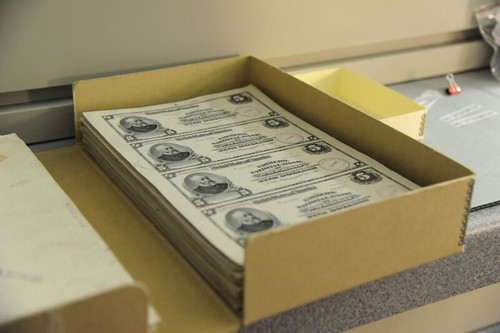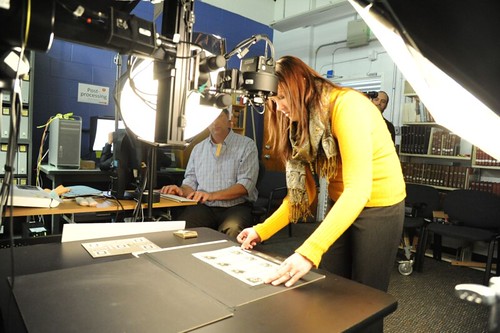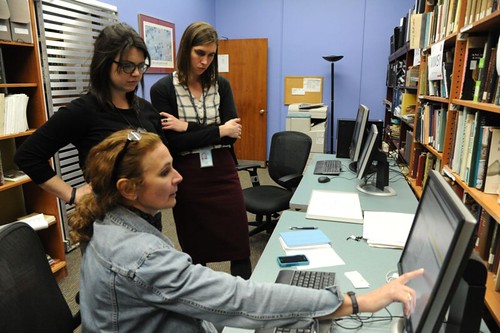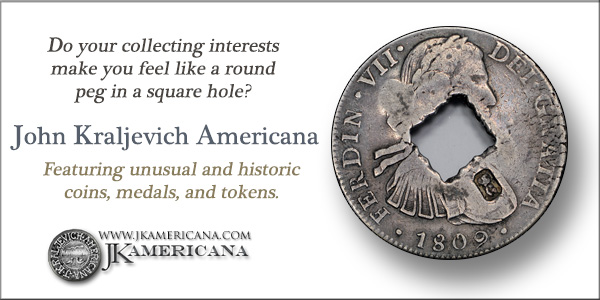
PREV ARTICLE
NEXT ARTICLE
FULL ISSUE
PREV FULL ISSUE
SMITHSONIAN DIGITIZES 270,000 BEP CERTIFIED PROOFS
This week I had a nice conversation with Jennifer Jones, who supervises the Division of Numismatics at the Smithsonian Institution. With
some organizational assistance from Peter Huntoon, the division recently completed a project to digitize 270,000 Bureau of Engraving and
Printing certified proofs of currency, bonds, revenue stamps, and other intaglio products, and they hope to make all of these images
available on-line at high resolution within the next couple of years. Already over 46,000 high-resolution scans of Series of 1875, 1882
and 1902 national bank note images have been uploaded to the Smithsonian website.
Certified proofs are printer's proof sheets submitted to officials for approval before full-scale printing proceeds. Here's an earlier Smithsonian blog article about the project. -Editor Have you ever seen a box full of money—well, not exactly, money, but certified plate proofs? What about stacks of boxes? Stacks on stacks? Unless you're a regular in the National Numismatic Collection vault, chances are you haven't seen anything like it. Over the course of one week, these boxes were opened up, their contents digitized, and now their content is going online for all to see—and help transcribe. Intern Peter Olson interviewed some of the staff responsible for opening this trove to the masses. 
All week, staff from across the Smithsonian have been stopping by the National Numismatic Collection area to see a unique process called "rapid capture digitization" in action. The Numismatic Collection team is working in partnership with the Smithsonian's Office of the Chief Information Officer's Digitization Program Office and the National Currency Foundation. It allows collections specialists to gather visual, textual, and other data from museum objects quickly and make all this available digitally at a very high quality level. That may not sound impressive until you compare the speed of rapid capture to traditional methods, in which a single scan might take 20 minutes. It would take months to complete what was accomplished in just a week. 
While the demonstration room was full of computers and cameras, the process isn't just a technical one. "It's an education process," says Jennifer Jones, chair and curator of the Division of Armed Forces History, which includes the National Numismatic Collection. "It's to show what's possible and to get these [proofs] to the public." But these objects aren't just available for looking—in this project, the public has a very special chance to interact with these proofs through the Smithsonian Transcription Center, where anyone can volunteer five minutes or five hours to transcribe text and information about the objects to create and enhance their online records. This is a big step for a Smithsonian museum. "We don't often let incomplete data out, but we are for transcription," continues Jones. Giving the public a chance to help complete these records opens up a whole new world of volunteer opportunities for museum lovers. 
The transcription volunteers are an integral part of this process. "There are about 2,800 regular volunteers," says Dr. Meghan Ferriter, project coordinator for the Smithsonian Transcription Center. These volunteers are capable of transcribing and reviewing 60-700 pages per week, with a record volume day of 215 pages transcribed. Once transcribed, collections information becomes far more searchable and useful to researchers and the general public. "Our volunteers believe in helping the Smithsonian." Feritter continues, "We are continuing to evaluate quality, but we are positive and comfortable that our volunteers are making trustworthy transcriptions. This quality is absolutely crucial and we are learning more everyday by collaborating with our volunteers. Transcriptions make collections more accessible to both researchers and the public. With these projects, we are increasing the detail of Smithsonian collections by actually creating collections records—all through special access to these rarely exhibited proof sheets via the Transcription Center." This entire process is designed for rapid turnaround. How rapid? "We're seeing a turnaround of about 36 hours. From the vault shelf to the public, that's the approach." says Ken Rahaim, still image program officer with Smithsonian Digitization Program Office. "As soon as it's live, volunteers jump into the project." says Dr. Ferriter. The transcribers even tweet with each other to swap tips and share successes. The pace truly is impressive given the quality of the work. These images are captured at 80 megapixels and create images with resolution of 690 pixels per inch. This allows intricate designs of only 20 microns thickness to be captured and analyzed or simply marveled at by a numismatist. When given the chance to examine an image, I could zoom in a seemingly infinite amount and still have a crisp image to study. In the end, 3,069 proof sheets were captured. That's "20 boxes and represents sheets from seven different states," says Hillery York, a collections manager in the Numismatic Collection. Perhaps even more impressive than the number and speed of captures was the sense of inspiration among Smithsonian staff who visited the demonstration—many of the over 140 staff who visited walked back to their offices pondering how they'd use rapid capture digitization in their own work. Are you interested in historical currency? How about botany or historical writings? Help the Smithsonian out by volunteering with the Smithsonian Transcription Center. More photos of this pilot project are available on Flickr. To read the complete article, see:
To read the earlier E-Sylum articles, see:

Wayne Homren, Editor The Numismatic Bibliomania Society is a non-profit organization promoting numismatic literature. See our web site at coinbooks.org. To submit items for publication in The E-Sylum, write to the Editor at this address: whomren@gmail.com To subscribe go to: https://my.binhost.com/lists/listinfo/esylum All Rights Reserved. NBS Home Page Contact the NBS webmaster 
|